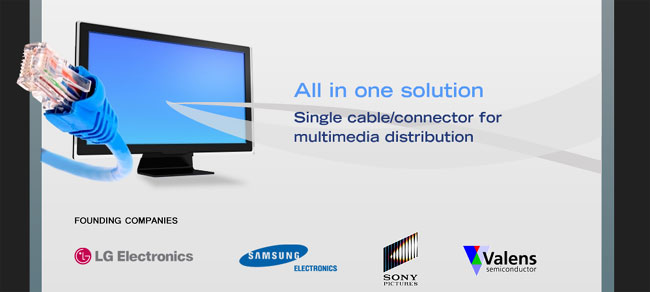 LG Electronics, Samsung Electronics, Sony Pictures Entertainment and Valens Semiconductor have been secretly conspiring to kill HDMI. And today they set their plans into motion, introducing a brand new audiovisual standard, HDBaseT. While that name may sound confusing, before you slap your head, this will not likely introduce a new kind of cable to your house.
LG Electronics, Samsung Electronics, Sony Pictures Entertainment and Valens Semiconductor have been secretly conspiring to kill HDMI. And today they set their plans into motion, introducing a brand new audiovisual standard, HDBaseT. While that name may sound confusing, before you slap your head, this will not likely introduce a new kind of cable to your house.
Past A/V standards from industry groups have introduced a plethora of connectors (S-Video, HDMI, DisplayPort for example), so that makes this release all the more unusual. Instead of a new connector, it is based on the Cat 5e/6 network cables, commonly referred to as “ethernet cables”.
It supports cable lengths up to 328 feet. The cable can pass HD and 3-D video signals, as well as data through an integrated 100MBit Ethernet connection. That data feed should allow for new internet-connected TV services, such as Google TV which delivers advertising-funded services to TV sets.
The standard also has many other advantages. For one, it will help declutter the growing mess of cables in the average household. By repurposing ethernet cables, it should also dramatically lower costs, both for the manufacturer and the consumer.
About the only loser in the situation may be “premium” cable makers like Monster Cable Products. However, it’ll only be a matter of time before Monster finds a way to throw gold or other precious metals into a Cat 6 cable and release it as a “premium” HDBaseT cable.
About the only loose end is what mini-connectors will arise out of this new standard. Currently many smart phones, such as the HTC EVO 4G offer mini-HDMI connections. Perhaps more advanced mini-USB connections will answer that dilemma, though.
The standard will begin its rollout later this year. The majority of its volume will hit in 2011. Check out the comparison table below:



